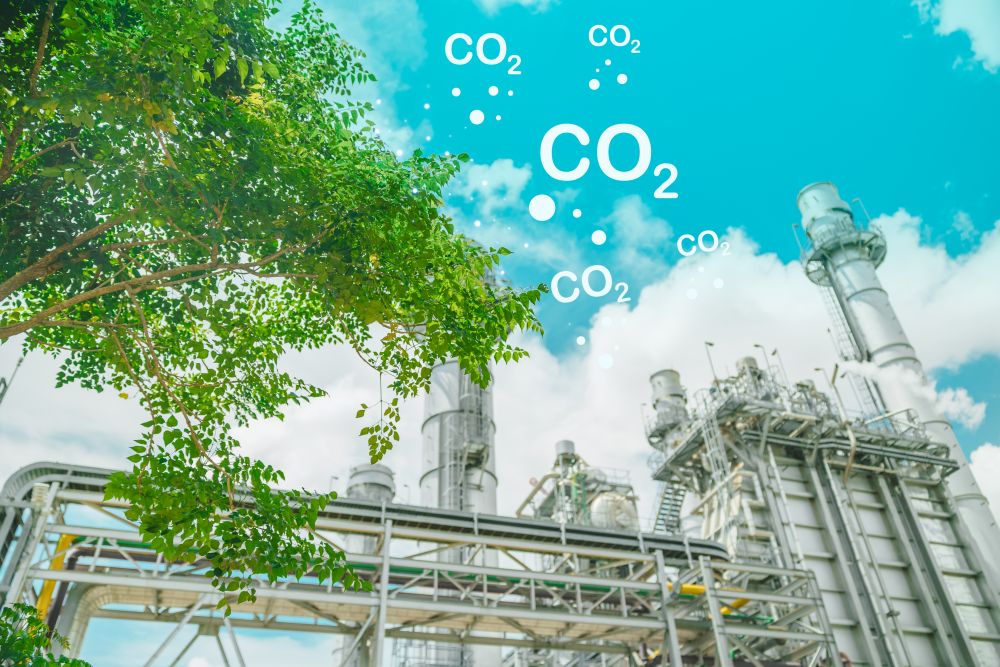25/25 🌍 What is Carbon Capture Technology?
Posted 5 months ago
Carbon capture and storage (CCS) is a way to capture carbon dioxide (CO₂) from factories, power plants, or the air. Once caught, the CO₂ is buried underground or used in other ways. This method only removes a tiny amount, about 0.1% of the world's emissions. However, experts say we must remove more than 1 billion tonnes annually by 2030 to stop the planet from getting too hot. We're not there yet, but aiming high pushes new ideas and technologies forward.
🛠️ The Four Main Capture Approaches
- Post‑combustion capture - Scrubs CO₂ from flue gases after fossil fuels burn. Well-understood, but energy- and cost-intensive.
- Pre‑combustion capture - Pre-combustion capture involves extracting carbon dioxide before burning fossil fuels.
- Oxy‑fuel combustion - Burns fuel in pure oxygen, so the exhaust is almost all CO₂, making it easier to capture, but producing oxygen is expensive
- Direct air capture (DAC) - Like Orca in Iceland, massive fans pull in air, chemicals bind CO₂, and then it's stored underground (with Carbfix turning it to rock). DAC is powerful but costly, over $1,000/tonne, though scaled-up plants may bring it down to ~$100–200/tonne.
Emerging methods like chemical looping, calcium looping, and even microbial electrolysis are gaining traction. They offer improved efficiency or synergies with existing industries.
🚧 Industries Using Carbon Capture Technology
- Large-scale industrial CCS
- The Brevik cement plant in Norway now captures ~400,000 t/year CO₂ and ships it for permanent storage via the Northern Lights project.
- Peak District (UK)
- £28.6M invested in a CCS pipeline for cement and lime plants to prevent emissions of 3 million tonnes/year and create ~13,000 UK jobs.
- Bioenergy with CCS (BECCS)
- Backed by Google and Shopify, startups like Arbor secured $41M in pre‑sales to strip CO₂ from biomass power plants.
- Direct Air Capture hubs
- Climeworks (Orca and Mammoth) and U.S. DOE–funded DAC hubs in Texas and Louisiana are building the foundation for mass DAC.
💰 Dollars & Sense: The Economics Puzzle
Carbon capture remains an expensive technology. Small DAC plants once cost ~$100/tonne, but it can now cost over $1,000/tonne. Scaling up might decrease costs, but infrastructure investments, pipelines, storage sites, and long-term monitoring require sustained capital and incentives.
Governments are stepping in:
- U.S. offers tax credits and billions in clean tech funding.
- The UK is committing billions to clusters like HyNet, East Coast, and Peak Cluster.
- EU, Denmark, Indonesia, Norway, China, and others are rolling out CCUS subsidies and regulations.
Still, deployment is fragile. Projects are expensive, performance is sometimes inconsistent, and leakage or fossil-fuel enabling raises concerns.
🧭 The Road Ahead: Strategy & Stakes
-
Scale smart infrastructure: Shared pipelines and offshore storage “hubs” reduce cost and increase access (e.g., Northern Lights).
-
Stronger policy frameworks: Clear carbon pricing, sustained subsidies, performance standards.
-
Build public trust: Ensure transparency, monitor storage safety, engage communities.
-
Support materials innovation: Lab successes (silk sorbents, MOFs) need funding to scale to industrial levels.
-
Balance clean-energy investment: CCS should complement, not replace other strategies like wind, solar, and grid modernization.
💡 Greeningdotlive Thoughts
In simple terms, carbon capture isn't a magic fix for climate change, but it's becoming a necessary tool as the planet keeps warming and emissions continue. Think of it like insurance: it's not cheap or perfect, but it gives us protection where we don't have other good options, especially in heavy industries like cement and steel. If governments stay committed, companies invest wisely, and the public supports the effort, carbon capture can grow from a small experimental idea into a powerful part of the global climate solution. It may not solve everything, but it can help us avoid the worst.




